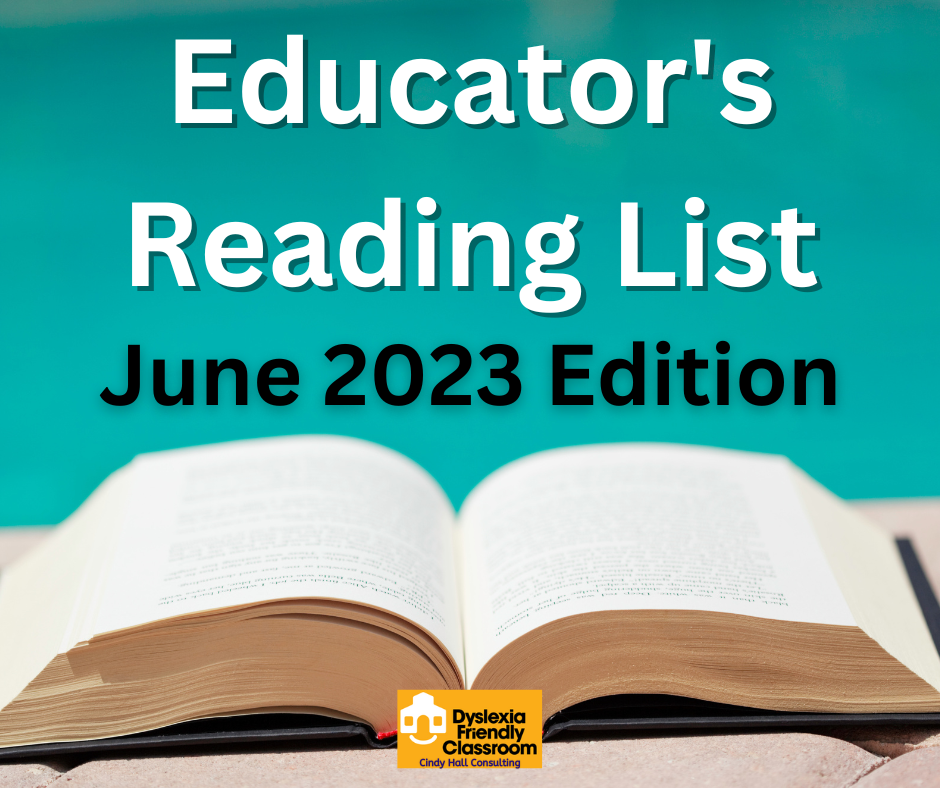Summer is a great time for educators (and interested parents) to read a few deep-dive books on topics related to dyslexia. Here are a few to work on during June.

Dyslexia and Spelling:Making Sense of it All
By Kelli Sandman-Hurley
110 pages
If you are tired of students asking you why words are spelled a certain way and your go-to response is blaming the dictionary, this book is for you. This is the text that will equip you to help struggling students understand orthography, the writing system of language. Be ready to ditch all your tried-and-true rote memory spelling games and rewards and plan to teach your students to see the connections between words and understand the whys of how words are spelled!
Ox, House, Stick: The History of our Alphabet
By Don Robb
45 pages
Did the title of this one scare you off? The great truth is, it is a picture book, filled with interesting tidbits about our alphabet letters! This month’s quote - go back and check it out if you missed it - came from this book. Your penmanship lessons will take on a whole new level of cool as you share factoids to go along with the letter formation you are teaching. Every student mastering the ball and stick of the letter “b” would be interested to know it first was representative of a house, pronounced “beth,” and formed by an open-topped square crowned with an open-bottomed triangle.
Speech to Print: Language Essentials for Teachers
By Louisa Cook Moats
230 pages
This is the “heavy hitter” of the June reading list, the book you will be so glad you made time for when you have finished it. In her purpose statement, the author observes, “The teacher who knows language will understand why students say and write the puzzling things that they do and will be able to judge what a particular student knows and needs to know about the printed word.” This book will equip teachers with the knowledge about language that will allow them to diagnose student knowledge gaps based on their language errors, and develop prescriptive remediation to fill the holes and move the student forward. An appendix chock-full of case studies gives real-world examples to build a bridge between the text and the language strugglers in your classroom.
Comments